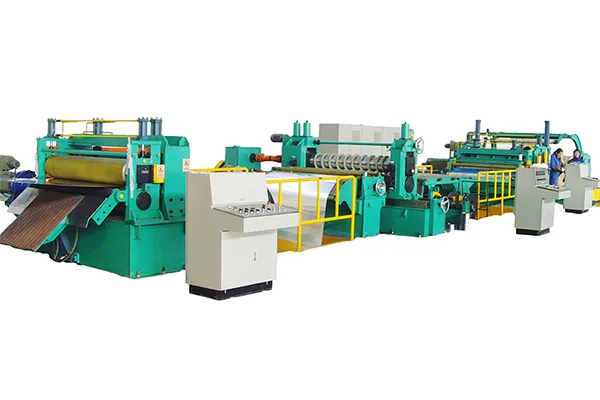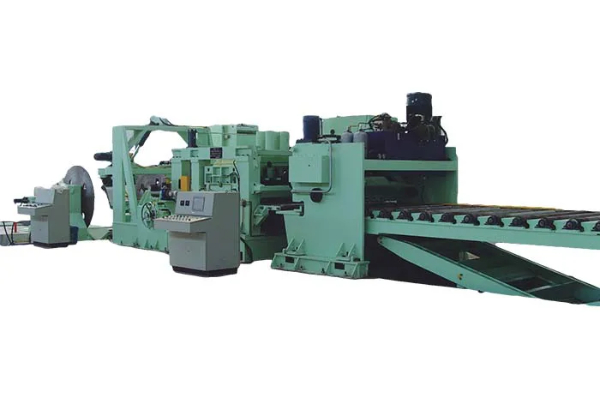
Eco-Friendly Aspects of Laser Cutting Technology for Iron
- By:Metmac
- 2024-07-10
- 141
Laser cutting technology has emerged as an advanced manufacturing process that offers significant ecological advantages in the cutting of iron and other metals. This article explores the various eco-friendly aspects of laser cutting technology for iron, highlighting its positive environmental impact and sustainability credentials.
Reduced Material Waste
Unlike traditional cutting methods such as plasma cutting or water jet cutting, laser cutting produces minimal material waste. The high precision and accuracy of the laser beam enable the creation of intricate cuts without the need for extensive material removal. This eliminates the generation of scrap metal and significantly reduces the overall waste footprint of the manufacturing process.
Energy Efficiency
Laser cutting technology consumes significantly less energy compared to other metal cutting methods. The laser beam is highly focused and generates little heat, resulting in reduced energy consumption. Additionally, laser cutting can operate at high speeds, maximizing productivity and minimizing energy waste. The efficient energy utilization contributes to lower operating costs and a reduced carbon footprint.
No Harmful Emissions
Laser cutting does not produce harmful emissions or toxic fumes during the cutting process. The laser beam vaporizes the metal, creating a clean and precise cut without releasing hazardous byproducts into the environment. This eliminates the need for extensive ventilation systems and reduces the risk of air pollution and health hazards for workers.
Reduced Noise Pollution
Laser cutting is a relatively quiet process compared to other metal cutting techniques. The laser beam produces minimal noise during operation, resulting in a more comfortable and less disruptive working environment. This reduction in noise pollution can improve productivity and minimize disturbance to nearby communities.
Improved Cut Quality and Precision
The high precision and accuracy of laser cutting technology ensure superior cut quality and dimensional stability. The laser beam can create intricate cuts with smooth edges and minimal burrs, eliminating the need for additional finishing processes. This precision reduces the amount of material required for each part and minimizes the generation of waste.
Increased Safety
Laser cutting technology offers enhanced safety benefits compared to traditional cutting methods. The closed-loop laser beam is contained within a controlled environment, preventing accidental contact with the operator or flying debris. Additionally, the absence of hazardous fumes and reduced noise levels contributes to a safer working environment.
Environmentally Friendly Materials
Laser cutting is compatible with a range of environmentally friendly materials, including recycled metals and biodegradable substrates. By using sustainable materials in conjunction with laser cutting technology, manufacturers can further reduce their environmental impact and promote a circular economy.
Conclusion
Laser cutting technology for iron offers numerous eco-friendly advantages, including reduced material waste, energy efficiency, no harmful emissions, low noise pollution, improved cut quality and precision, increased safety, and compatibility with environmentally friendly materials. By adopting this sustainable manufacturing process, industries can minimize their environmental footprint, reduce waste generation, and create a more sustainable production chain. As the demand for eco-friendly products and processes grows, laser cutting technology is poised to play a critical role in shaping a greener future for the metalworking industry.
-
Sheet Metal Rolling Machine for Sale: Finding Precision and Durability with METMAC
2025/12/09 -
Press Brake Bending Machine: Engineering Precision with METMAC
2025/12/09 -
CNC Sheet Bending Machine: Precision Redefined with METMAC
2025/12/09 -
Sheet Metal Roll Forming Machines: The Precision of METMAC Engineering
2025/12/09
-
Advanced Sheet Metal Rolling, Laser Cutting, and Folding Machines for Precision Fabrication
2025/10/31 -
High-Performance Sheet Metal Bending and Cutting Machines for Modern Fabrication
2025/10/31 -
High-Quality Sheet Metal Equipment for Sale: Efficient Solutions for Modern Manufacturing
2025/10/31 -
High-Performance Sheet Metal Equipment for Sale: Forming and Shearing Solutions for Modern Fabrication
2025/10/22
-
A Guide to the Latest Innovations in Sheet Metal Folding Machines
2024/11/29 -
Key Features to Consider When Investing in a Sheet Metal Folding Machine
2024/11/28 -
Enhancing Precision with Advanced Sheet Metal Folding Machines
2024/11/27 -
How to Choose the Right Sheet Metal Folding Machine for Your Workshop
2024/11/26







